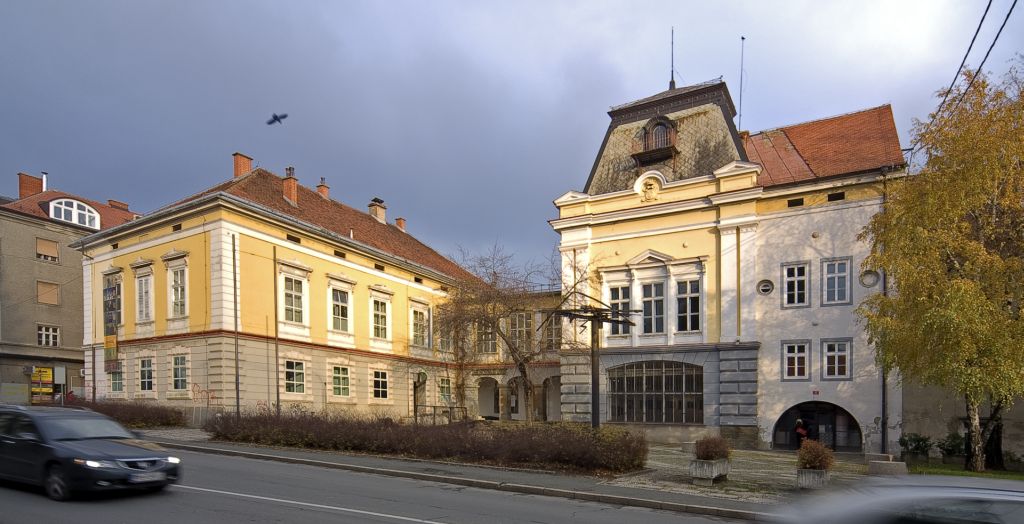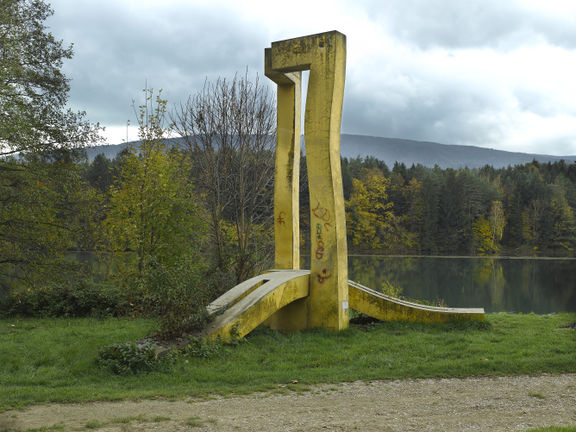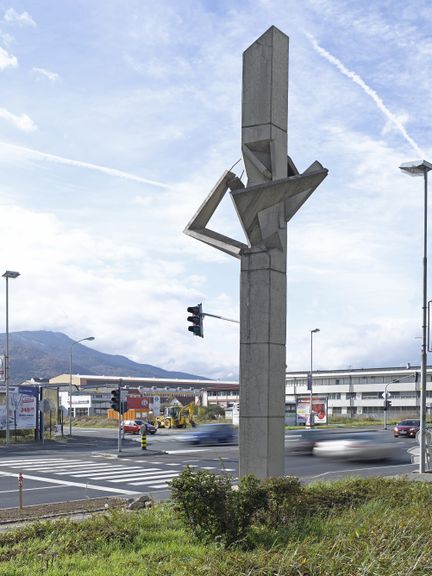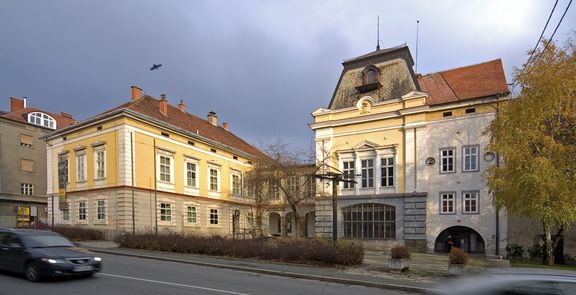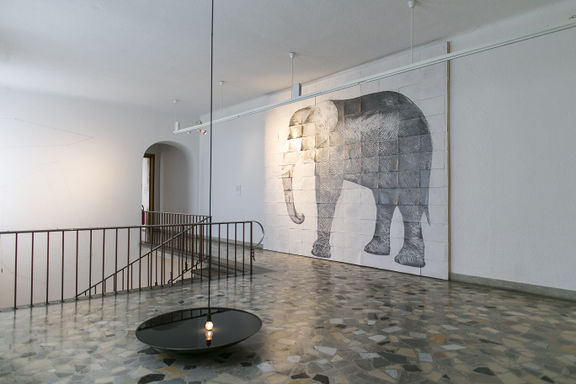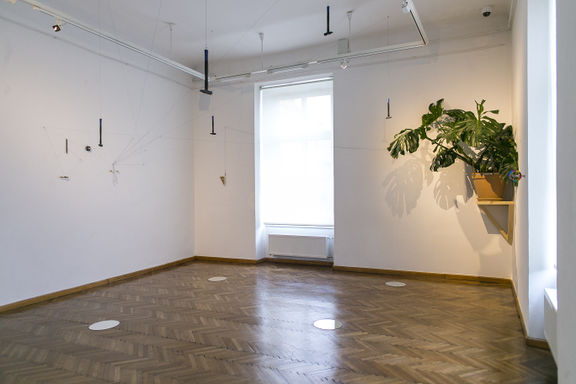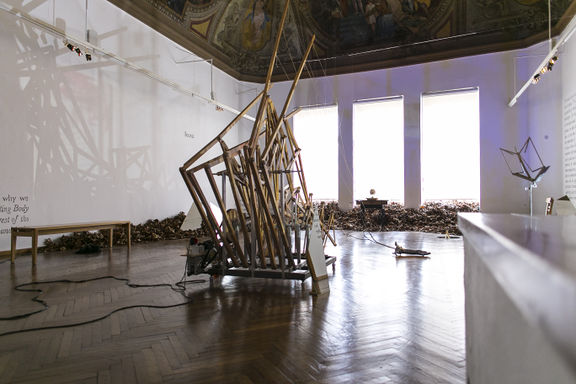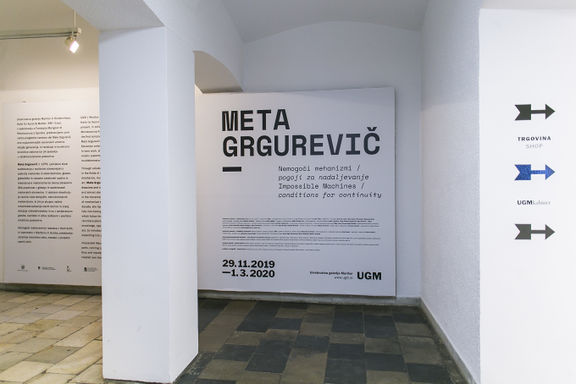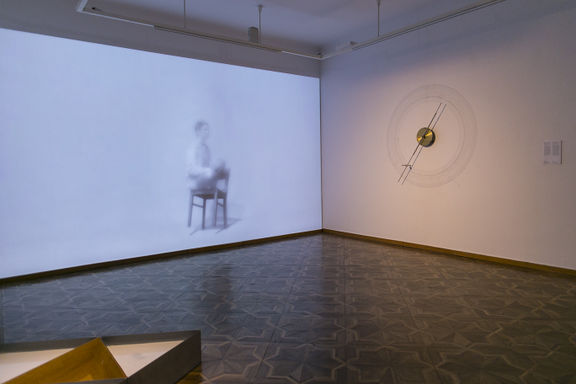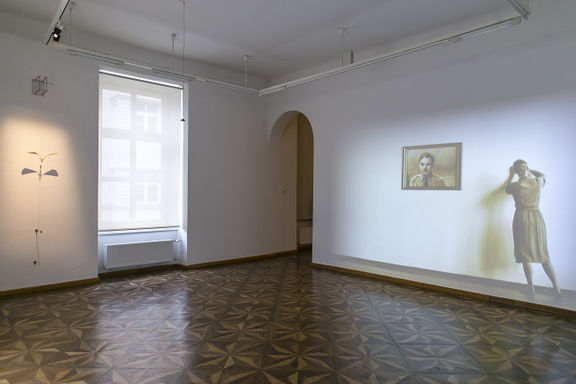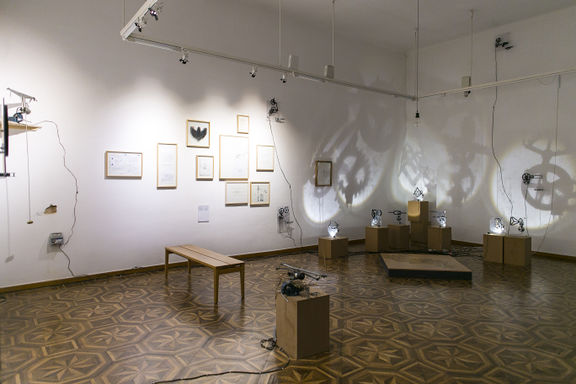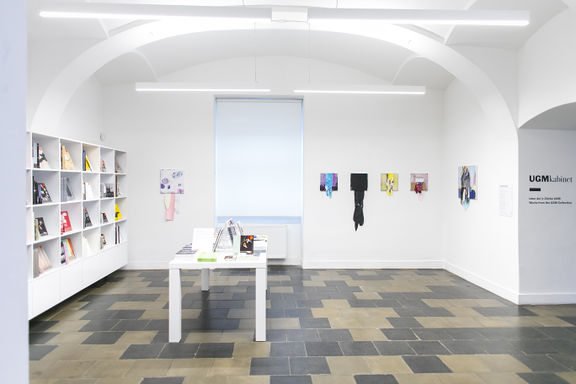Maribor Art Gallery

-
to
20 Sep 2020
9 May 2021
GermanyBautzenSorbisches MuseuColours of the Distance. The painter Ante Trstenjak and the Lusatian Sorbs, an exhibition coorganised by the Maribor Art Gallery and the National Museum Prague
-
to
31 Jan 2020
2 Apr 2020
AustriaGrazKünstlerhaus GrazImpossible Machines, a solo exhibition by Meta Grgurevič, curated by Simona Vidmar (Maribor Art Gallery),
-
to
19 Sep 2019
22 Sep 2019
AustriaGrazDifferent locationsSteirischer HerbstJasmina Cibic featured in the festival's core program titled Grand Hotel Abyss , supported by the Maribor Art Gallery and Slovenian Culture and Information Centre, Vienna (SKICA) (Embassy of the Republic of Slovenia in Vienna),
-
to
9 May 2019
30 Jun 2019
ThailandBangkokBangkok Art & Culture CentrePioneer in Video Art from Thailand, Slovenia, Norway since 1980 exhibition featuring also the works from the Video Art Collection of the Maribor Art Gallery, curated by Miha T. Horvat, Son:DA Foundation,
-
to
24 Sep 2018
3 Oct 2018
FranceAngoulêmeLa Maison des AuteursSamira Kentrić at the Comics & Illustrators Residence, organised by the Wom@rts project in cooperation with the Maribor Art Gallery,
-
to
10 Sep 2018
16 Sep 2018
CroatiaZagrebHala V (behind Technical Museum Nikola Tesla)International Photography FestivalPhotographers Andrej Lamut and Ana Zibelnik featured at the exhibition Parallel Intersection as part of the platform Parallel, supported by the Creative Europe programme, (platform's partner Maribor Art Gallery,
-
to
10 Sep 2016
9 Oct 2016
ChinaBeijingToday Art MuseumFlat and Distant—China and Slovenia Contemporary Art Exhibition, featuring works by Uršula Berlot, Samuel Grajfoner, Marjan Gumilar, Zmago Lenárdič from the collection of the Maribor Art Gallery, co-curated by Breda Kolar Sluga and co-organised by the Embassy of the Republic of Slovenia in Beijing,
-
to
5 May 2015
22 Nov 2015
ItalyVeniceArsenaleLa Biennale di Venezia International Art ExhibitionUTTER / The violent necessity for the embodied presence of hope, a project by JAŠA produced by Maribor Art Gallery in collaboration with WEARE Production, supported by the Ministry of Culture)
-
to
6 Feb 2015
28 Feb 2015
FranceMarseillePetiramaRefonte, an exhibition and round table discussion also featuring Janez Janša (Aksioma Institute), Vladimir Vidmar (ŠKUC Gallery), and Simona Vidmar (Maribor Art Gallery),
-
to
5 Feb 2014
30 Mar 2014
SpainMadridCírculo de Bellas Artes of Madrid (CBA)Oto Rimele's exhibition The Light of Shade co-organised by the Maribor Art Gallery
-
to
18 Dec 2013
7 Jan 2014
CroatiaZagrebAcademia ModernaBlack on White, an exhibition of artists’ magazines and newspapers in Slovenia, organised by the P.A.R.A.S.I.T.E. Institute, International Centre of Graphic Arts, Ljubljana, and Maribor Art Gallery,
-
to
1 Oct 2010
2 Oct 2010
CroatiaZagrebKino Mosor and Vladimir Nazor GalleryUnfinished Modernisations conference, coorganised by TrajekT, Institute for Spatial Culture and Maribor Art Gallery
- Art and Well-being, 2019
Project summary - PARALLEL – European Photo Based Platform, 2017
Project summary - Wom@rts – Women Equal Share Presence in the Arts and Creative Industries, 2017
Project summary - Unfinished Modernisation - Between Utopia and Pragmatism, 2010
Project summary Show more
Background and venues
By establishing the Maribor Art Gallery in 1954 as the first professional institution in the field of fine arts Maribor again became a relatively important centre of artistic and cultural development that goes back to the tradition of the Grohar Art Club, which was established in the 1920s and had a pioneering role in the organised art life in Maribor. By moving into the building on the corner of Strossmayerjeva and Orožnova streets, UGM acquired about 800 square metres of exhibition space, including the representative Knights' Hall and Pillar Hall. The main exhibition venues are located in the former manor house built in the first half of the 19th century and the former church of the Celestine monastery from the second half of the 18th century.
In 1966 the gallery acquired the Rotovž Salon located at the old Town Hall ('Rotovž') and in the 80s a Department for Contemporary Art and an additional modernist space for presenting contemporary visual art in the very centre of the town. The former space was closed in the 90s, while the second one runs the contemporary art programme as an UGM Studio.
Programme
With its collection and the programme of approximately 20 exhibitions and events annually – ranging from retrospective reviews of works by Slovene artists, through solo and group presentations of visual and new media artists to international festivals of contemporary art as well as architecture and design exhibitions – UGM importantly shapes both the art scene in Slovenia, regionally and internationally. The most important international event is the International Triennial Ecology and Art, organised by the Maribor Art Gallery since 1980. The museum also collaborates with other local organisers. In 2010, for example, it hosted the exhibition Twenty-six million minutes later. New Tendencies, from the Collection of the Museum of Contemporary Art Zagreb in the framework of the International Festival of Computer Arts (IFCA).
The gallery's Education Department runs an art programme for children and youth, including an annual exhibition Gallery-suits-me [Miprijagalerija].
Collection
The collection contains works by major artists of modern and contemporary art, particularly by those from Styria (Štajerska region), Carinthia (Koroška region) and East Slovenia (Prekmurje region). Since 1999 UGM has held the first collection of video art in Slovenia. The collection of UGM comprises mainly works acquired through a systematic purchase policy, plus donations and legacies and also a small number of works of art transferred from the Maribor Regional Museum.
Paintings and sculptures
The collection of paintings comprises major historical styles of fine art of the 20th century and represents the core of the permanent collection of UGM. The features of the UGM collection are some complete opuses of selected authors from north-eastern Slovenia, such as Janez Šibila, Maks Kavčič, Oton Polak, and Zmago Jeraj. Another focus are certain art movements, especially Slovene Expressionism and New Objectivity: the collection contains a few excellent works by Tone Kralj and France Kralj, and Fran Stiplovšek, as well as the opuses of Slavko Tihec and painter Rudolf Kotnik, the pioneers and leading figures of Slovenian abstract art of the early 1960s.
The production of the recent decades is represented by the works of Oto Rimele, Darko Golija, Jurij Kalan, Marko Jakše, Zdenka Žido, and others. The collection attracts attention also with the works of Zoran Mušič, an internationally acclaimed Slovenian painter who spent his youth and early creative years in Maribor.
Prints and drawings
Printmaking, drawing and other works on paper form a substantial part of the UGM collection, again based on 20th-century styles. Works on paper have been created by using different classic and experimental techniques and represent an interesting study material. The collection of prints includes works by all major Slovene artists; among those particularly interesting are Lojze Šušmelj's opus from the late 1960s, Bojan Golija's cycle of prints from the late 1950s that was inspired by Japanese prints, excellent works by the so-called "Ljubljana Printmaking School" works by Bogdan Borčić, a leading Slovene printmaker of the older generation, as well as works by one of the most prominent printmakers of the younger generation, Samuel Grajfoner.
Photography
UGM primarily collects photographic works produced after 1960, when photography in Slovenia became an independent artistic medium. During this time some Maribor-based photographers were also acclaimed in the wider area of the former Yugoslavia. The central part of the collection consists of works by members of the "Maribor Circle" with Zmago Jeraj, Ivan Dvoršak, Branko Jerneić, and Janko Andrej Jelnikar who donated more than 140 photographs in 2009. The museum acquires also the works by younger artists who have established themselves through photography, among them Aleksandra Vajd.
Video and new media
In 1999 UGM was the first museum in Slovenia to collect works by Slovene video artists. The collection is conceived as a historical survey of Slovene video works from the 1960s to present time. It includes the works by the pioneers from the 1960s and 1970s (Nuša Dragan & Srečo Dragan, Miha Vipotnik), and by the most important video artists of the 1980s and 1990s, when the medium was established as an independent and equal medium of artistic creativity (among them Marina Gržinić & Aina Šmid, Marko Kovačič, Andrej Lupinc, Zemira Alajbegović Pečovnik & Neven Korda). The works from the 1990s by Nataša Prosenc, Andrej Zdravič, Jasna Hribernik, Franc Purg, and Ema Kugler are presented as well as the contemporary production expanding to new media (Vuk Ćosić, Igor Štromajer, Janez Janša, Apolonija Šušteršič, Damijan Kracina & Vladimir Leben, and son:DA).
In 2009 the selected works from the collection were presented on the To Be Continued exhibition at the Museum of Modern Art Rijeka, Croatia.
See also
- Maribor Art Gallery Library and Archive
- UGM Studio
- Forma Viva Open Air Sculpture Collection, Maribor
- Satchmo Jazz Club, Maribor located in the Gallery's cellar
External Links
- Maribor Art Gallery (UGM) website
- UGM collection
- Lecture on Jan Oeltjen's Self-portrait by Meta Gabršek Prosenc on VideoLectures.Net (in Slovenian)
Gallery
- Museums
- Visual arts galleries
- Visual arts museums
- Galleries
- Visual arts
- Collections
- Exhibition organisers
- Event organisers
- Festival organisers
- Photography
- Video
- Visual arts producers
- Architecture exhibition organisers
- Architecture exhibition venues
- Maribor, European Capital of Culture 2012
- Slovene Impressionists and their Time
- EU funding of Slovene organisations (Culture and MEDIA Programmes)
- EU Culture funding recipient
- EU Creative Europe, Culture funding recipient
- Forma Viva Collection
- Municipal cultural institutions
- Courses and workshops
- Design exhibition and event organisers


